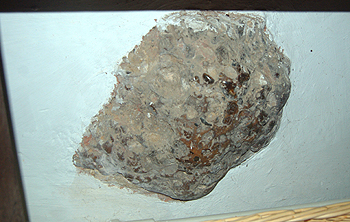Slip End Before 1086
The Bedfordshire Historic Environment Record [HER] contains information on the county’s historic buildings and landscapes and summaries of each entry can now be found online as part of the Heritage Gateway website. There are a number of entries for Slip End.
The earliest record of human activity in the area is a scatter of flint flakes from the Mesolithic Era – a time when there were no permanent settlements. These come from an area north-east of the village between it and the M1 and were discovered by field walking in 1992 [HER 16969]. Also recovered from this area were Bronze Age flints – use of flint tools continued through the Bronze Age because they were easier to make than bronze tools and the raw material was to hand.
More Bronze Age flints were discovered in an area between Woodside Road and the M1 around the same time [HER 16067]. This scatter also included Neolithic tools and Romano-British pottery, showing a continuity of settlement for four thousand years between the Neolithic and today.

Pudding stone in Caddington church June 2012
The upper part of a Romano-British quern (a device for grinding corn) was found in the area [HER 2040]. It is made of Hertfordshire pudding stone, some examples of which can be found at the west end of the nave of Caddington church. Finally the Viatores, a group devoted to finding lost Roman roads in the modern landscape have suggested that one ran between Caddington and Hyde via Slip End [HER 2801] as part of a longer road from Cheshunt [Hertfordshire] to Dunstable. The road shows as an agger (a green lane with a slightly raised surface along the centre line and a ditch at each side).